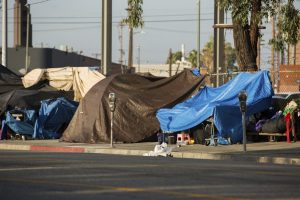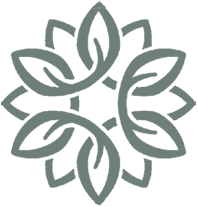Homelessness: Low-Cost Communities that Offer Career and Skills Development and High Community Return
 Executive Summary
Executive Summary
A growing homeless population, the need for social distance, and overcrowded shelters have left some cities looking for alternative solutions like a block of motel rooms or purchasing entire motels to temporarily house the homeless. Hotel renovations or new builds can cost hundreds of thousands of dollars per unit and take months to complete.
A permanent supportive housing framework with a dramatically lower initial cost and design that maximizes access to needed services provides hope, security, and opportunities for individual and social change. It meets the physical needs at a lower cost and the psychological needs to aid healing, recovery, and stability.
The proposed framework would use tiny homes, travel trailers, and mobile homes that cost significantly less per unit than a new build or hotel renovation. When arranged in small, homogenous communities, these units can be placed on existing city, county, state, and federal properties away from residential communities but near services those living in the community need. These homes provide privacy and security, but when situated within the permanent supportive housing framework, they also provide access to a supportive community where they can choose how and when they interact with their neighbors.
The Need to Overcome Financial Realities
Numerous groups in cities around the United States and the world go to extraordinary efforts to provide shelter, regular meals, and proper health care to a growing homeless population. They face enormous challenges and oftentimes overcome to find facilities, beds, and human resources to shelter, feed, and provide medical care to the homeless. It is a huge challenge fraught with obstacles that government agencies, non-profits, and private individuals work tirelessly to overcome. However, the cost of affordable housing has become a barrier to reducing people sleeping on the streets. Many cities and counties have turned to building new shelters or renovating hotels as temporary housing options.
The cost of hotel purchases and renovations varies by location but can run anywhere from $250,000-$400,000 per unit or more. The Sacramento Bee reported that the Capitol Park Hotel renovation is currently running at the price of $445,000 per unit, with each unit only offering 250 square feet of living space.[i] The median price for 1,600 square foot home in the same city comes to $425,000. The same article reports that the cost of a similar two-bedroom renovation comes in at $750,000 per unit.
A number of factors contribute to the high price of building affordable housing. The 2014 California Affordable Housing Cost study found many issues that contribute to the high cost of housing for those in poverty. Local regulations and codes that require changes in appearance, amenities, or construction practices increased costs by five to seven percent.[ii] Rising costs of construction materials, land, and labor all factored in, too.
However, those costs rose an additional five percent due to delays that often come from community opposition. Bureaucratic setbacks and lag time extend the months it can take to complete a construction or renovation project, adding time until people can occupy the space, which can happen more efficiently with the less expensive alternatives.
Buildings over four stories increased costs by 10 percent, adding an additional $28,000 in some cases. Parking, construction wages, local hiring and density requirements, and much more factor into overall costs, too. There is an obvious need for more housing options that meet basic physical needs, but costs stand as a very real and problematic barrier.
The shelter and hotel model of housing the homeless also does not solve the temporary nature of the living situation. The uncertainty that comes with living in a shelter or hotel leads many to feel that an underpass, car, or street corner feels more like home. People are left with the anxiety of not knowing what comes next.
Shelters and motels, by their very definition, feel temporary and symbolize impermanence. Shelters are optimal for temporary support and foster more viable survival and make some progress toward independence. However, a wide variety of people from all walks of life, from the underemployed to those who suffer from severe mental illness, find themselves put together.[iii] Many times, they don’t share common backgrounds or issues and challenges they seek to overcome other than to better their lives and find permanent housing. There’s a disconnect between people that does not foster the sense of community that can aid healing.
The herein proposed permanent supportive housing framework substantially reduces costs, meets physical needs, and within the proposed framework, also fulfills the psychological needs of those living within the designed communities.
Cost Effective Housing: Meet the Physical Needs with an Eye for the Psychological Necessities
As has been described in prior white papers, dividing the homeless population into eight to ten individual, homogenous communities where occupants who share either life circumstances (single mothers), history (veterans), or medical needs (addiction recovery) gives people a better chance of identifying with the people around them and accessing the right healing services. When this type of community comes with the basic services, security, and sense of belonging that we all psychologically crave and need, it facilitates healing.
Homogenous communities composed of clusters of tiny homes, modular homes, or travel trailers are all much more viable housing options from a financial and psychological point of view. This model overcomes the challenges faced by both shelters and motel renovations. These small, mobile dwellings offer a housing solution at a significantly reduced cost in comparison to either a new build of apartments, shelters, or motel/hotel renovations.
Quotes from tiny home manufacturers like Group Harwal that constructs homes in Montebello, CA, and throughout the country, put the cost of tiny homes with one bedroom, one bathroom, and a small kitchenette at approximately $20,000 to $25,000 per unit versus the $445,000 per unit for a hotel renovation. That does not include the cost of bringing utilities to the units, but if they’re placed on public lands that are otherwise unused, funds will naturally stretch a great deal farther to house and support as many people as possible.
Using these relatively easier to build mobile housing units gives city governments more direct control over the location of the communities in comparison to a hotel renovation or new construction because city/public property can be used as sites.
Some cities may decide that they would consider the greater benefit of using a municipal golf course or park that is not near a residential community to reduce objections by local neighborhoods. Fewer objections potentially reduce costly delays in construction. The local government can transform this land for the common benefit, establishing new priorities when the area is not immediately adjacent to a local community. Public lands on the outskirts of the city or county limits present a major alternative. Of course, the use of public lands would require flexibility from city officials with any necessary planning and zoning changes. That’s why any plan relies on coordination and cooperation between city governments, philanthropic organizations, and developers, but working for a better long-term well-being of a given city makes the efforts worthwhile.
But, ultimately, each community can be located in a place that best serves those who occupy the community and those who live in the city in which it belongs. Cities and counties can work to integrate each community into the larger culture and society of the surrounding city, making the community a sought after and desirable place to live.
Shared Space: Going Beyond the Physical Basics to Deeper Human Needs
Shared public spaces are an important part of a desirable community. Community First in Austin, TX, has created a 51-acre community that provides housing for people coming out of chronic homelessness.[iv] Shared public spaces like an art house, cinema, market, and woodworking shop are key to the healing, training, enjoyment, and development of self-reliance of the community members. These features build a sense of belonging and pride in the community.
In the proposed framework, each individual community can have central locations designed for public functions for community members. Recreation spaces, dining halls, classrooms for group therapy, skills training, or job training can be incorporated into the design and layout. People would naturally socialize with their neighbors who, in a small community designed for a specific sector of the homeless population, are facing similar challenges and will naturally have commonalities over which they can bond. Each community would have appropriate security measures based on location and the needs of the community’s members.
In this type of community, people can choose when and with whom they interact. They have their own private, secure space yet are not isolated from their neighbors. A recreational center, exercise facilities, game rooms, a community dining hall, and outdoor recreation area are places that promote a sense of belonging. They bring with them the possibility of fun, independence, and connection, which are huge benefits that many in the homeless population haven’t had the opportunity to experience very often and may not expect or even feel like they deserve. Additionally, public spaces where people feel welcome and accepted encourage belonging. Individuals can decide to eat alone or with others, which is an extremely appealing option for virtually all of us.
In the field of psychology, belonging stands as a bedrock need that spans all walks of life. It is one of the greatest needs in human existence. For a group of people who are working to change their life circumstances, a sense of belonging in a place where they also receive needed support is immeasurably valuable.
Coming Together: Partnering for Access to Education, Skill Development, Job Training
The city of Trieste, Italy, where there’s very little homelessness, acts as an international model on not just eliminating homelessness but successfully treating the mental illness that’s so often a major contributor to homelessness.[v] There, the homeless are not seen as a separate entity but an accepted part of their society that needs extra care. People receive mental health services, quality nutrition, housing, and treatment options based on their circumstances, abilities, personal goals, and desires.[vi] Following this model, these smaller, individual communities can also provide access to mental health care, medical care, adequate nutrition, life skills training, job training, and business opportunities.
The People Concern, located in LA County, has some features similar to Trieste and of the proposed framework.[vii] This program provides access to a permanent housing option, access to health care, mental health care, and life skills and wellness services. Their success highlights the efficacy of portions of the proposed framework, such as access to health care, training, and permanent housing. Integrating additional elements of the proposed model could further enhance the offered services.
A key differentiating factor between these existing programs and the proposed model is the individual communities comprised of people with similar backgrounds and/or health issues. This type of arrangement allows for treatment and help at a level that best meets the needs of community members. Communities that provide varying levels of help effectively utilize a range of professional services, which benefits both the person receiving and giving the service. Vocational training professionals or skills development experts can be precisely positioned to care for those who are ready to unlock their greatest potential. Professionals can provide in-scale services, interconnecting these communities with a wider umbrella of opportunity.
These communities would partner with B-Corp businesses when possible (ones that are established for the primary purpose of social well-being and profit secondary), like EveryTable that provide healthy prepared food at reduced prices for underserved communities and options for the affluent to donate a meal to those in need.[viii] Non-profits like Grid Alternatives offer job skills training in the solar energy sector to underserved communities.[ix] In this case, trainees can install solar panels on the community buildings, making them energy self-sufficient. Community members gain skills in a growing industry while serving the community in which they live. It could even lead to a revenue channel if excess energy could be sold to the surrounding power company.
By creating a community with fully functional communal facilities, people within the community can contribute inside and out in meaningful ways. Within the community, it could be cleaning, cooking, or organizing group activities. Some compromised individuals may not be ready for job training for the outside world, but they can learn skills that contribute to the community in which they live. Such activities and responsibilities allow the practice of life and people skills that for others can be used in gainful employment in the city in which community members live. Automotive skills, crafts, and other employable skills can be tailored to each community based on the abilities and needs of the community members.
When people’s basic needs are met, they can focus on deeper humanizing needs like developing empathy, building confidence, discipline, trust in themselves, and laughing and simply having fun.
Conclusion: A Shift Away from Transitional Housing Towards a Permanent Model
Communities with the right elements — housing, food, medical care, social support, job and skills training, recreation, receptive government agencies — act as a launching pad for change. These communities can serve as permanent homes for those who want it. Instead of wondering what they will do when it is time to leave, people can stay as long as they need to, including permanently. The state or federal government could create a program to quality people who receive SSI or SSDI to live in the community and contribute a portion of their monthly allowance, approximately $1,000, to gradually cover the original housing expenses and on-going services. There are those for whom this type of community will meet their needs better than any other alternatives. Knowing they can choose to stay lets the psyche rest in safety and security.
The economics of scale give these communities the chance to be a ‘dream’ community truly consistent with the original American promise, which is the greatest part of our country’s history. We can establish a badly needed, new type of leadership in our country, and hopefully eventually inspire similar communities throughout the world. Costs are significantly reduced, yet physical and psychological needs are met. A desirable community where people want to be, where they have the optimal chance to enjoy living, and where they know they’re valued for the contribution they can make is one that can reduce alienation, violence, sickness, and despair. We all deserve this deep consideration and opportunity and the ability to better our circumstances. This model makes that possible all while fostering the independence, confidence, security, and hope we each need to lead a happy, fulfilling life.
Robert Strock is a teacher, psychotherapist, author, and humanitarian and has developed a unique approach to communication, contemplation, and inquiry. He promotes national and international conversations on healing, having been a featured speaker at the UN, contributed in global documentaries, and runs a thriving private practice for business, non-profit, entertainment industry, and government leaders, as well as caregivers in a variety of fields.
Robert is an innovator in the field of psychology and is sought after for presentations, trainings, and consultation in corporate settings, non-profits, and with media audiences providing emotional and leadership guidance in times of global strife and uncertainty.
Open the Dialogue: The issues surrounding homelessness are many and complex. I invite all those who are interested in ending homelessness, addressing our relationship as a society to wealth, and other issues raised in this white paper to please reach out. Contact me at robertstrock.org.
Post-related online resources
Community First! Village
The People Concern
EveryTable
GRID Alternatives
___________
[1] Kreiser, M. (2020). These tiny apartments for Sacramento homeless will cost more to build than a luxury house. The Sacramento Bee. https://www.sacbee.com/news/local/homeless/article245547415.html
[1] California Affordable Housing Cost Study, (2014), http://www.housingnm.org/assets/content/Library/Cost_Containment/Oct2014_CA_FinalAffordableHousingCostStudyReport.pdf
[1] Institute of Medicine (US) Committee on Health Care for Homeless People. Homelessness, Health, and Human Needs. Washington (DC): National Academies Press (US); 1988. 1, Who are the Homeless? https://www.ncbi.nlm.nih.gov/books/NBK218239/
[1] Community First! Village – https://mlf.org/community-first/
[1] Waters, R. (2020). A new approach to mental health care, imported from abroad. Health Affairs. https://www.healthaffairs.org/doi/full/10.1377/hlthaff.2020.00047
[1] Waters, R. (2020). The old asylum is gone: Today a mental health system serves all. Health Affairs. https://www.healthaffairs.org/doi/10.1377/hlthaff.2019.01671
[1] The People Concern – Homeless Services. https://www.thepeopleconcern.org/homeless-services/
[1] EveryTable – Mission. https://www.everytable.com/mission/
[1] GRID Alternatives – What We Do. https://gridalternatives.org/what-we-do



